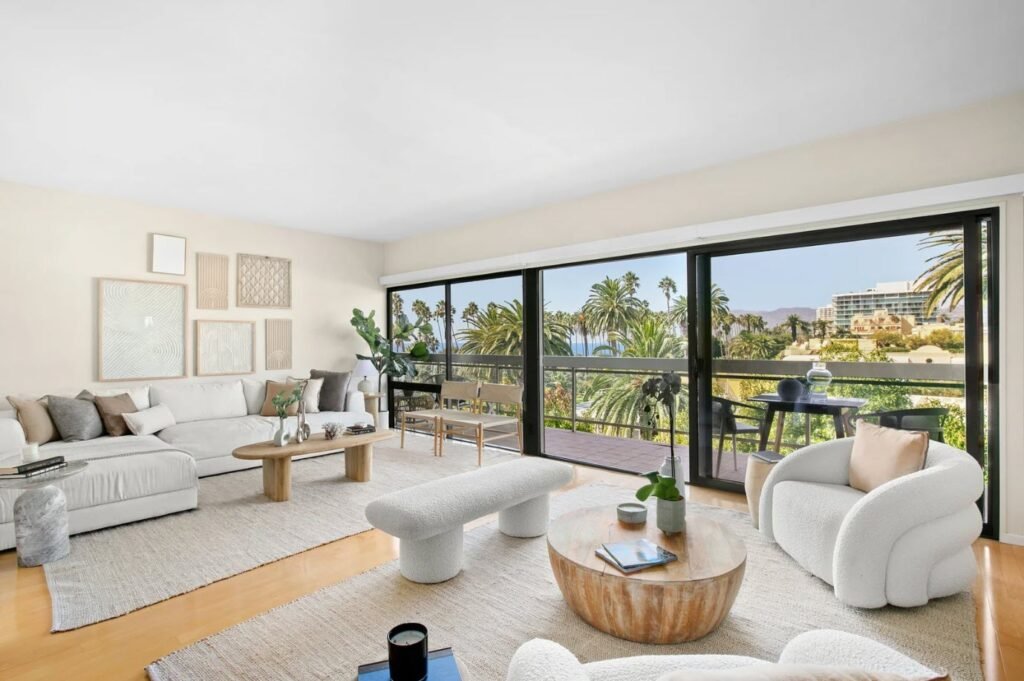Mid-Century Modern Style in Home Staging & Interior Design:
A design styleStyle in Home Staging & Interior Design: The overall aesthetic or design language chosen for a space, influencing furniture selection, décor, color palette, and textures. The Importance of Style in Home Staging - Why it's Something to Consider The Style chosen in home staging sets the overall t... More popular from the 1950s to the 1960s, characterized by clean linesMinimalism in Home Staging & Interior Design: An approach to design emphasizing simplicity, functionality, and decluttering. In staging, minimalism uses clean lines, neutral colors, and minimal furniture to create a spacious and serene atmosphere, attracting buyers who value uncluttered living. ... More, geometric shapes, organic forms, natural materialsRustic Style in Home Staging & Interior Design: A design aesthetic inspired by nature and rural living, featuring natural materials, earthy tones, and simple forms. The Importance of Rustic Style in Home Staging - Why it's Something to Consider Rustic style in home staging is important as it bri... More like wood and leather, pops of color, and integration with nature. It’s often used in home staging for its timeless appeal"Appeal" in Home Staging & Interior Design: The overall attractiveness and desirability of a property to potential buyers, influenced by factors like curb appeal, layout, functionality, and staging. The Importance of Appeal In Home Staging - Why It's Something to Consider Appeal, in the context ... More and versatility.

The Importance of Mid-Century Modern in Home Staging – Why it’s Something to Consider
Mid-Century Modern style"Accessorizing" in Home Staging & Interior Design: The act of adding decorative elements to a space, like placing throw pillows on a sofa or arranging books on a coffee table, to complete the look and inject personality. The Importance of Accessorizing In Home Staging - Why It's Something to Con... More is important in home staging as it offers a timeless, clean, and functional aesthetic"Aesthetic" in Home Staging & Interior Design: The overall feeling or vibe of a space, encompassing the chosen style, color palette, textures, and furniture, and evoking a specific mood or impression. The Importance of Aesthetic In Home Staging - Why It's Something to Consider Aesthetic, encompa... More that appeals to a wide range of buyers. Known for its sleek lines, organic shapes, and emphasis on functionalityFunctionality in Home Staging & Interior Design: The ability of a space to serve its intended purpose efficiently and comfortably. Staging considers furniture function, traffic flow, and accessibility to optimize everyday living. The Importance of Functionality in Home Staging - Why it's Somethi... More, this style can make a home feel both stylish and livable. It works well in a variety of settings, from vintage"Antiques And Vintage" in Home Staging & Interior Design: Furniture, decor, or art pieces with historical value and unique character, adding a touch of timelessness, storytelling, and potential heirloom pieces to a space. The Importance of Antiques - Vintage In Home Staging - Why It's Something ... More homes to contemporary spaces, making it a versatileTransitional Style in Home Staging & Interior Design: A design style that blends elements of traditional and contemporary styles, creating a versatile and timeless look. The Importance of Transitional Style in Home Staging - Why it's Something to Consider Transitional style, a blend of tradition... More choice for staging.
Incorporating Mid-Century Modern elements in home staging requires a balanceVisual Weight in Home Staging & Interior Design: The perceived heaviness or lightness of objects and elements within a space, influencing balance and visual interest. The Importance of Visual Weight in Home Staging - Why it's Something to Consider Visual Weight in home staging refers to the perc... More between retro and contemporary pieces. The goal is to create a space that feels cohesive and thoughtfully curated. This style can be particularly effective in appealing to buyers who appreciate classic design with a modern twist. It can make a property stand out in the market by offering a clean, inviting, and stylish interior.
Tips and Best Practices when Utilizing Mid-Century Modern in Home Staging
Mid-Century Modern style, known for its retro-modern aesthetic, can be effectively used in home staging. Best practices include:
Authenticity: Incorporate genuine mid-century modern pieces or high-quality reproductions to give the staging authenticity.
Functionality and Simplicity: Emphasize functionality and simplicity in design, a hallmark of mid-century modern style.
Clean Lines and Organic Forms: Choose furniture and decor with clean lines and organic forms. Avoid clutter to maintain the minimalistScandinavian Style in Home Staging & Interior Design: A minimalist and functional design approach featuring clean lines, light wood tones, white walls, and pops of color. The Importance of Scandinavian Style in Home Staging - Why it's Something to Consider Scandinavian Style is significant in ho... More aesthetic.
Vibrant Accent Colors: While keeping the overall palette neutral, use vibrant accent colors typical of the era, like mustard yellow or teal.
Integrate with Contemporary Elements: Blend mid-century modern elements with contemporary design to appeal to a broader audience.

